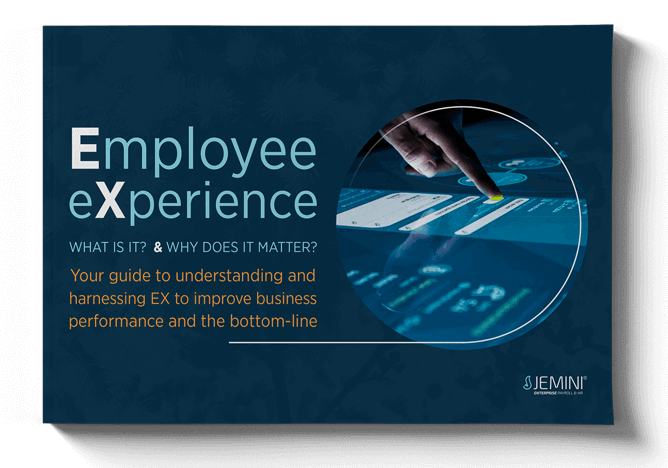The word resiliency has grown significantly more important during the last two years, as people have worked to bounce back from a period of immense worry, uncertainty and anxiety. Whilst most countries have managed to get COVID under a certain level of control and people are returning to the workplace, new challenges such as inflation and rapidly increasing energy prices are bringing a new set of worries.
So what is resiliency and how is it different from the stress management techniques often deployed to help a burnt-out or frazzled workforce? Stress management is reactive — dealing with the negative consequences of the stress itself. It’s an ‘after the event’ strategy. Resilience in contrast is proactive, training and developing people so they are prepared for the next crisis and are able to deploy their ‘own personal defenses.’ They are then less prone to experiencing stress, anxiety or other negative effects.
Building resilience means learning to handle failures and setbacks in a slightly different way. According to experts, becoming resilient is the type of habit you want to build for your whole lifetime. It can make people stronger, more confident and empower them to experience personal growth and greater self-fulfillment.

Resilience is something that everyone already has to some extent - even you! But the question is how to build it, like a strong muscle that can flexed when it’s needed most.
One of the things that holds even the best of us back is the tendency to catastrophise and ruminate about things that happen in the workplace, especially when we perceive them as being negative. When your manager says, “Can you come and see me in my office this afternoon?” Your brain will tend to think of the worst possible scenario. “Am I in big trouble?" you think to yourself! That invitation to the office could equally be about something incredibly positive. But our innate brains are so hardwired into survival instinct, we quickly put two and two together and make ten.
Paula Davis-Laack is an internationally renowned stress and resilience expert who has written many bestselling books on the subject. According to Davis-Laack, one of the secrets of building resilience is managers becoming more transparent in their daily interactions with their teams. By being transparent, employees know how they are doing, how the company is doing and have a realistic view of where they stand. They’re not left hanging on a thread, anxious about the real status quo. Managers can help their people catastrophise less by doing the following:
- Ask them to identify the worst-case scenario
- Then ask them to identify the best-case scenario
- Finally, they should then identify the most likely scenario.
This keeps people grounded and prevents their imaginations going wild into the deepest and darkest of unlikely possibilities.
An open-door policy is key to building resilience. Employees should feel that they can engage with managers at any moment. They should feel comfortable and at ease sitting in the manager’s office and even the CEOs office for that matter. Sitting across from a senior member of the team should never feel like a trip to see the headmaster for a telling off.
One of the greatest resilience builders is the formation of strong bonds between people at all levels in the organisation. With the rapid switch towards remote and hybrid working — this has never been more important. In fact, remote working has made it more difficult than ever to build the needed social and emotional connections with co-workers. That’s why you need to find new and different ways to build these special bonds.
So why are these personal bonds important? Humans are social creatures and thrive in environments where they feel liked, valued and accepted for who they are. Great relationships in the workplace are built on both the personal and professional level. It’s one of the reasons that senior managers are often advised to open up in the workplace about their personal lives and show a little vulnerability. It means they become seen as ‘real people’ with feelings and are not just perceived as ‘robotic bosses in suits. Fostering this closeness in your culture means that when something negative does happen or a new challenge is faced, empathy is felt between people. You feel that you’re sharing this challenge with an extended family instead of standing alone amongst strangers.
One simple way to create those personal connections is for managers to speak to team members regularly, both individually and as a group. Sharing, recognising and celebrating small wins is another resilience booster. This gives people a mental boost and a sense of recognition regularly, as opposed to waiting for formal reviews or annual awards.

A performance management-based approach to coaching and employee feedback is a style of management that can really drive resilience. Performance management is a style of leadership that focuses on managers becoming coaches rather than ‘bosses. Performance management programmes typically feature an approach where managers meet with individuals on a regular basis to talk about objectives, goals and performance against these.
Instead of getting ‘a good telling off’ — managers focus on working with people to help them inch closer and closer to their goals. With performance management, there is less focus on ‘fluffy’ competencies and a robust focus on tangible business outcomes that can be measured with “SMART” goals and objectives. In recent years, many organisations have implemented employee performance management along with performance management software. The software essentially makes it easy to track the performance of the goals and allows managers to focus their efforts on delivering meaningful coaching, instead of wasting time in spreadsheets and other manual forms of planning. If you’re serious about driving performance and helping teams become more resilient, employee performance management software can help scale the approach and identify the team members that need extra support and training.
Self-care and wellbeing isn’t a workplace resilience secret. It’s something that has become obvious and important to most forward-thinking organisations. It’s now common place to see employers offer access to mental health counselling, mindfulness sessions and even therapists who can deliver cognitive behavioural therapies. However, the challenge is that mental health still has a stigma attached to it — and people may feel ‘weak’ to admit to themselves and others that they might have a problem that needs professional intervention. That stigma can start to disappear once you normalise the use of these services.
It’s not easy for anyone to admit publicly that they’re ‘not OK’. As a manager, sharing your own life-struggles, worries and even your hopes and dreams can help make people feel at ease. When people see others opening up and showing their human side, people will feel a sense of courage and permission to seek help when they need it. Managers should always use their discretion and emotional intelligence to help people access the help they need. It’s a delicate situation — helping identify someone who isn’t coping and encouraging them to embrace what’s on offer (without creating embarrassment or jeopardising a long-standing professional relationship).

The last secret of building resilience is praise and focusing on people’s strengths, rather than their weaknesses. In moments of crisis, even the most headstrong and confident of people can let their demons get the better of them, allowing confidence to melt away. This can lead to people feeling weak and hopeless — without the strength to tackle the challenge or crisis head on. At times like these, reminding people of their skills and qualities (and past triumphs) can be all it takes. This can restore confidence — and power people to get up, stand tall and show the crisis who’s boss!
As you can see, building workplace resilience doesn’t mean bringing in fancy consultants. It’s not something that needs to be bought in at great cost. It’s something that you can build together, almost for free. With a little self-awareness amongst leaders, managers and teams, you can become resilient together. Just remember that all of us, no matter where we sit on the organisational chart can tend to panic when the going gets tough. Come together, combine each others strengths and you’ll be amazing how you can ride and weather the storm, instead of drowning in it.
Explore more
Share this page
Ready to transform your HR & Payroll process?




